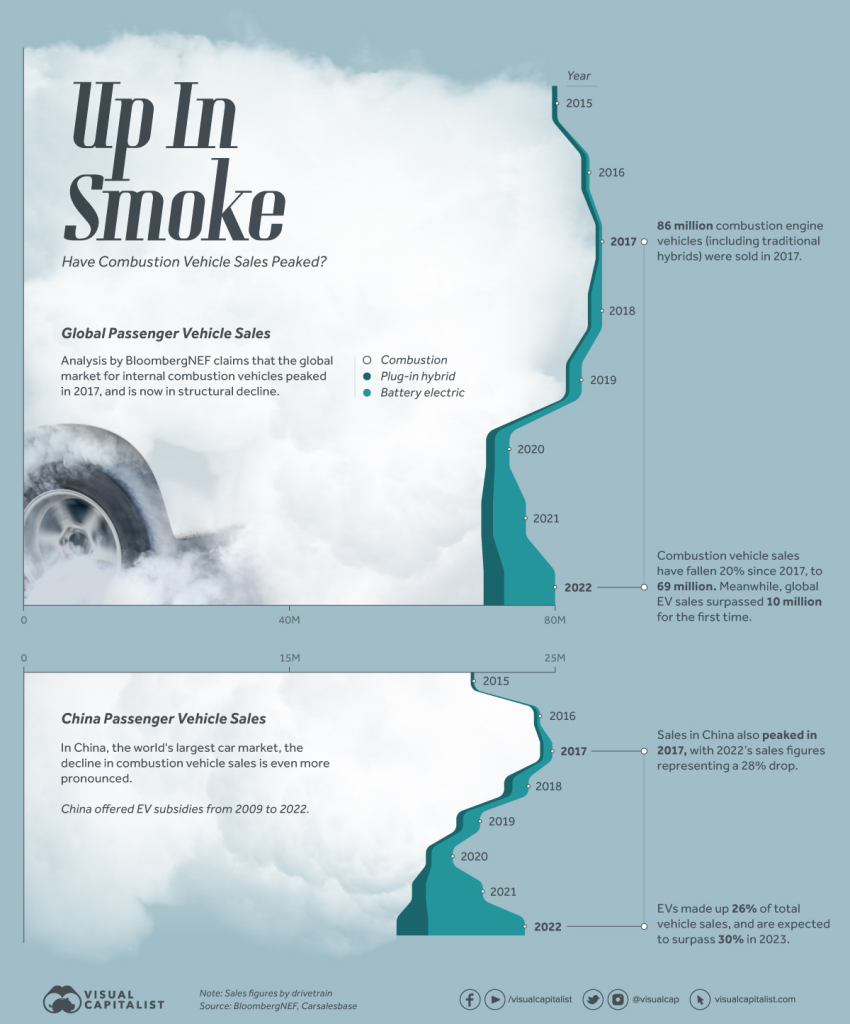Electric vehicles (EVs) have become an increasingly popular choice for environmentally conscious consumers around the world. As governments continue to prioritize reducing carbon emissions, electric vehicles have become a key part of the solution. In this article, we will compare electric vehicle sales around the world and examine the factors that are driving this growth.
China: The World Leader in Electric Vehicle Sales China is currently the world leader in electric vehicle sales, accounting for almost half of all electric vehicles sold globally. This is due in part to the government’s strong incentives for consumers to buy electric vehicles, including generous subsidies and tax breaks. In addition, China has invested heavily in building the infrastructure necessary to support electric vehicles, with a network of charging stations that is growing rapidly.

Europe: Rapid Growth in Electric Vehicle Sales Europe is also seeing rapid growth in electric vehicle sales, with Norway leading the way. In Norway, electric vehicles account for over half of all new car sales, due in part to the government’s incentives for electric vehicle buyers and high taxes on gasoline-powered cars. Other countries in Europe, including the Netherlands, Sweden, and Germany, have also seen significant growth in electric vehicle sales in recent years.
North America: A Growing Market for Electric Vehicles North America is a growing market for electric vehicles, with the United States leading the way. While electric vehicle sales in the US are still relatively low compared to China and Europe, they are growing rapidly. In 2020, electric vehicle sales in the US increased by 43%, and this growth is expected to continue in the coming years. Canada is also seeing steady growth in electric vehicle sales, with government incentives and a growing charging infrastructure driving adoption.

Factors Driving Electric Vehicle Sales There are several factors that are driving the growth of electric vehicle sales around the world. One of the most important is government incentives for electric vehicle buyers, such as tax breaks and subsidies. In addition, the growing awareness of climate change and the need to reduce carbon emissions is driving consumers to choose electric vehicles over traditional gasoline-powered cars.
Another important factor is the development of the necessary infrastructure to support electric vehicles, including a network of charging stations. Governments and private companies around the world are investing heavily in building this infrastructure, which is critical for the widespread adoption of electric vehicles.
Finally, advances in battery technology and the decreasing cost of electric vehicles are also making them more attractive to consumers. As battery technology continues to improve, electric vehicles are becoming more affordable and offering longer ranges, making them a viable option for more consumers.
Conclusion Electric vehicles are becoming an increasingly important part of the global automobile market, as governments and consumers alike prioritize reducing carbon emissions. While China currently leads the world in electric vehicle sales, Europe and North America are also seeing significant growth in this market. As governments and companies continue to invest in the necessary infrastructure and incentives to support electric vehicles, we can expect to see continued growth in electric vehicle sales around the world.








